By Dennis Busch, Andrew Cartmill, Will Keast and Matt Harper, University of Wisconsin-Platteville
Introduction
Sustainable and resilient agroecosystems are key to the future food security of the United States. Crop and livestock producers in southwest Wisconsin are efficient producers of food, fuel and fiber, and are using practices like cover crops and reduced tillage to enhance sustainability of environmental resources. Unfortunately, it is often challenging to quantify the impact of these practices on the environment and productivity. Here we present preliminary results describing the effects of conservation practices on soil health and water quality.
The data presented was collected on local farms with a variety of tillage systems and conservation practices. Tillage systems included conventional tillage, strip tillage and no-till with and without cover crops. Soil health and water quality metrics evaluated include infiltration rate, soil erosion, phosphorus loss, soil stability, bulk density, earthworm population, soil respiration and corn grain yield.
This data collection effort is part of ongoing, larger research effort supported through USDA National Institute of Food and Agriculture grant funding. Data presented is preliminary and will be augmented with addition field data collection and laboratory analyses.
Data collection methods
Water quality data was generated utilizing a rainfall simulator as described in the “National Research Project for Simulated Rainfall – Surface Runoff Studies.” Briefly, this rainfall simulation methodology utilizes in-field runoff plots (1.5m x 2m) orientated with the slope to isolate and collect surface-water runoff associated with simulated rainfall events. The simulated events apply 12 cm of rain per hour (4.7 inches/hour). The duration of the rainfall simulation is variable for each site and is dependent on the time required to produce initial runoff. After runoff is observed the simulation is conducted for an additional 30 minutes. All runoff from the simulation is collected and total volume is determined. After conclusion of the simulation, the sample is thoroughly mixed and a 1-liter sample is collected for laboratory analyses.
Soil Health Data was collected using USDA NRCS methods as described in the Soil Quality Test Kit Guide.

Preliminary findings
Results obtained from the rainfall simulations indicate a difference in infiltration and runoff across the production systems. The figure below illustrates the total inches of simulated rainfall applied and the percentages that infiltrated into the soil or ran off the soil surface. In general, infiltration rates were higher in the no-till and cover crop scenarios. Highest runoff amounts were observed under conventional tillage where 69 percent of rainfall applied was lost through surface-water runoff.
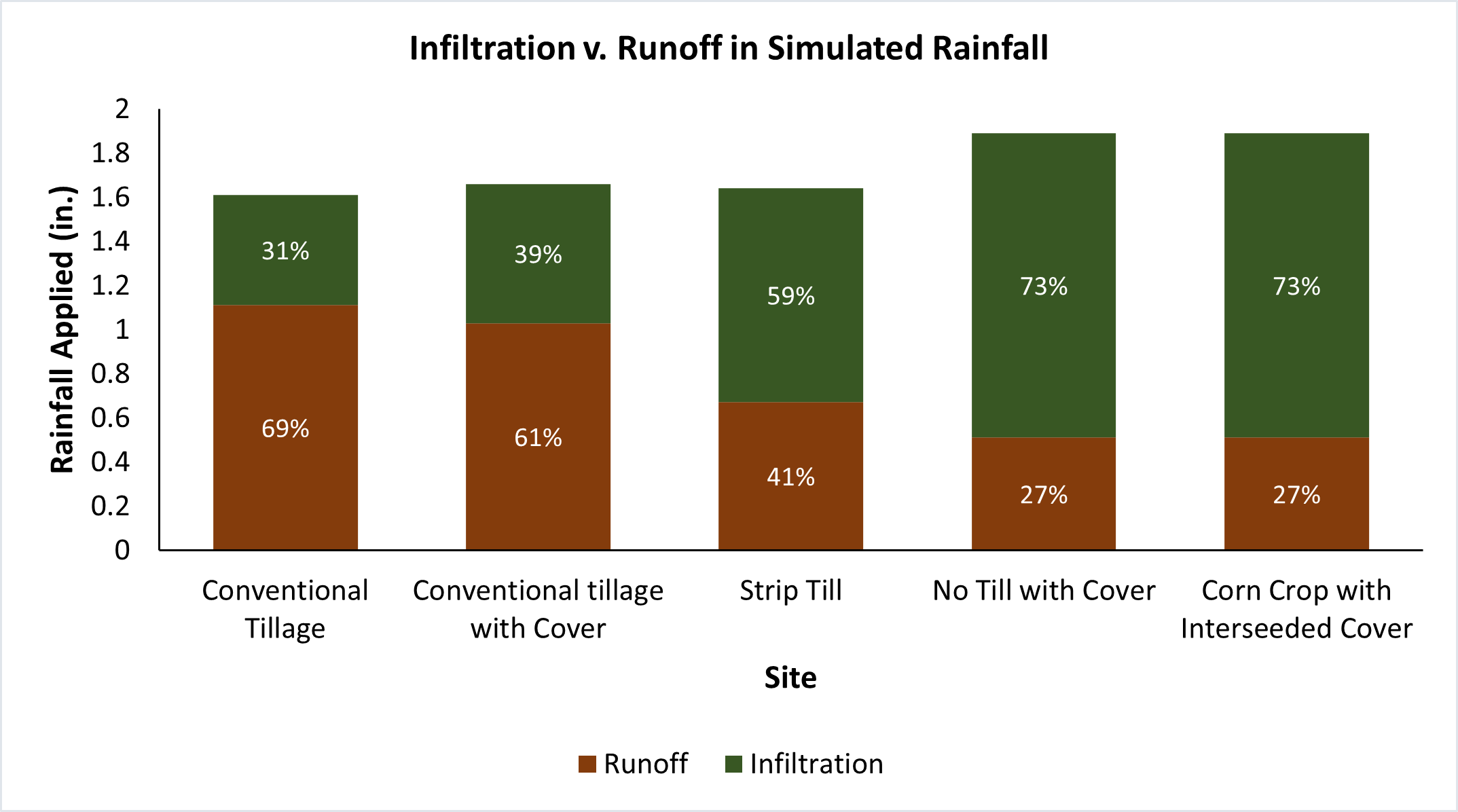
Runoff generated from the plots during rainfall simulations was captured, measured and submitted to the laboratory for analysis of suspended sediment (soil erosion) and total phosphorus. Photographs of the collected samples from the various treatments are presented below as a visual reference of soil loss. Amount of soil loss decreases from left to right.
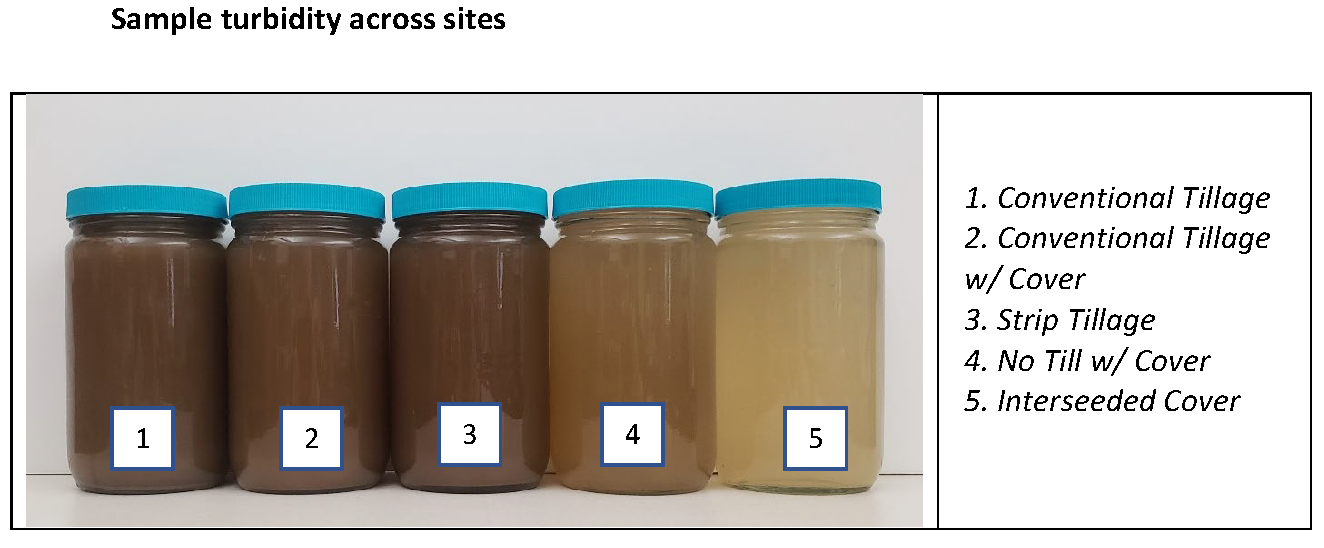
Soil erosion and total phosphorus loss followed a similar trend as indicated by the infiltration and runoff results. The highest losses were observed in conventional tillage with losses decreasing in systems with reduced tillage and greater use of cover crops. The lowest soil erosion and phosphorus loss were observed in plots where corn was interseeded into a standing crop of clover.
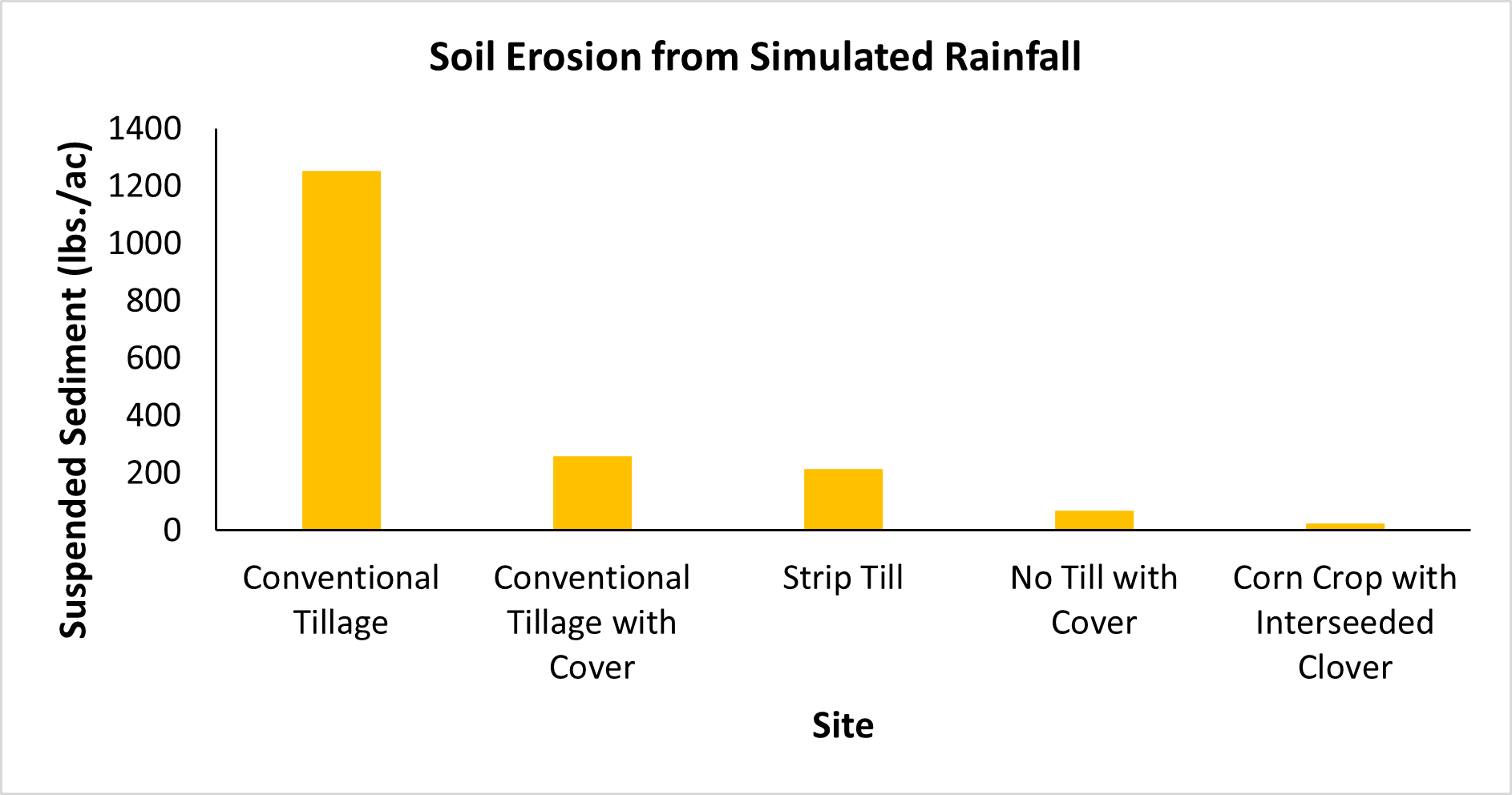
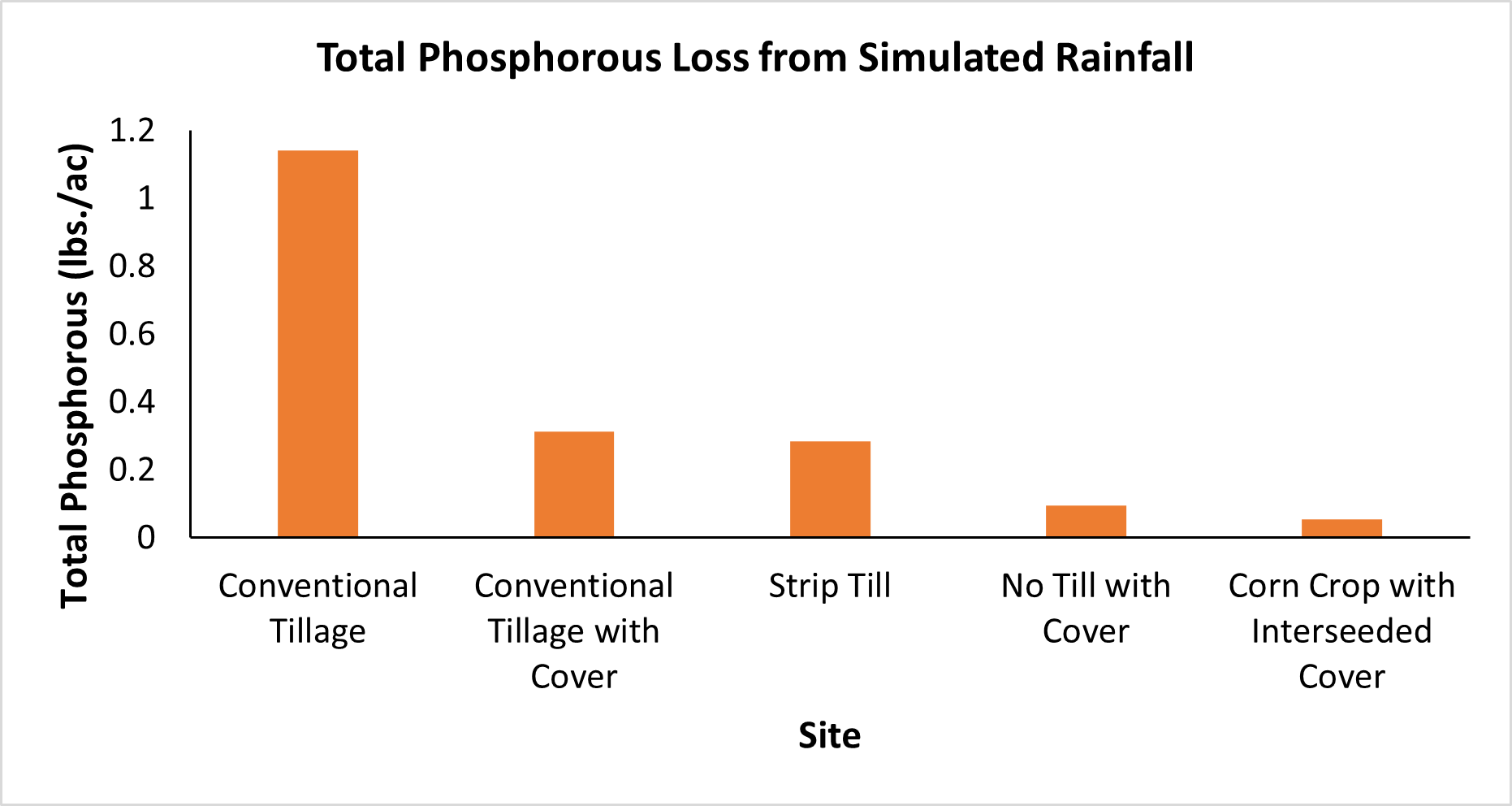
The following table includes a simplified comparison of selective metrics of soil health and water quality. This evaluation is a broader, more systems-based approach as it includes physical, chemical, and economic components of a larger resilient and sustainability metric.
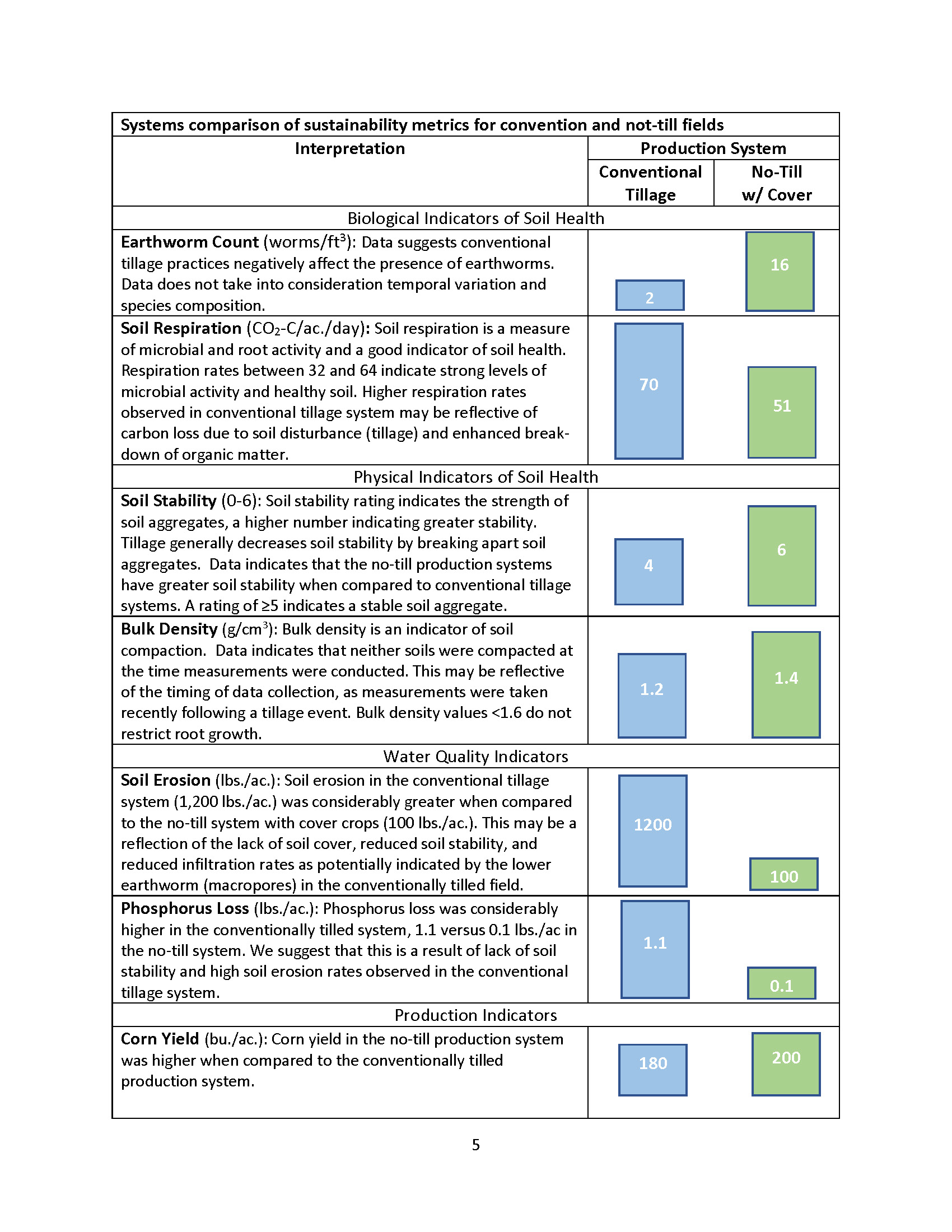
Conclusion
Our preliminary findings indicate that the production systems evaluated produce differing environmental outcomes. In general, as the use of tillage is reduced and the use of cover crops increased, water quality and soil health outcomes improve. While these findings are not unexpected, they build on the foundation of previous experience and data. Future field and laboratory analyses and data will support a better understanding of the cost-benefit relationship for conservation practices in our region. With this information farmers, stakeholders and policymakers will be better equipped to develop and implement local conservation activities.
